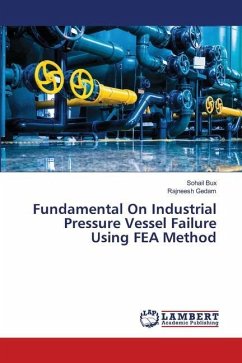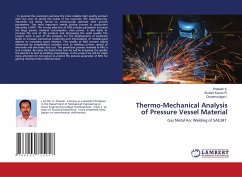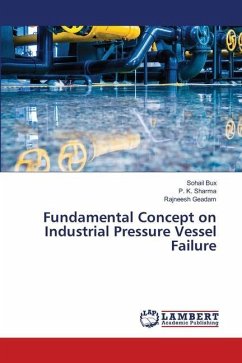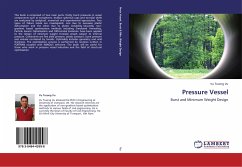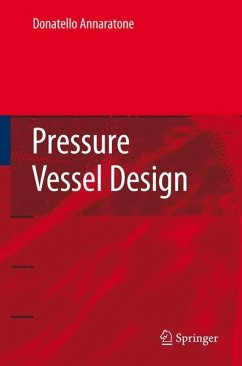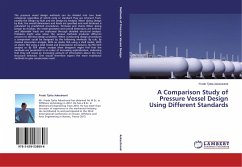
A Comparison Study of Pressure Vessel Design Using Different Standards
Versandkostenfrei!
Versandfertig in 6-10 Tagen
36,99 €
inkl. MwSt.

PAYBACK Punkte
18 °P sammeln!
The pressure vessel design methods can be divided into two basic categories regardless of which code or standard they are inherent from, namely the Design by Rule and the Design by Analysis. When doing Design by Rule, the overall dimensions and loads are specified and wall thickness is calculated by predefined procedures, formulas and charts. When doing Design by Analysis, the vessel geometry and overall dimensions are defined, and allowable loads are evaluated through detailed structural analysis. Problems might arise when the various methods produces different answers to identical design pro...
The pressure vessel design methods can be divided into two basic categories regardless of which code or standard they are inherent from, namely the Design by Rule and the Design by Analysis. When doing Design by Rule, the overall dimensions and loads are specified and wall thickness is calculated by predefined procedures, formulas and charts. When doing Design by Analysis, the vessel geometry and overall dimensions are defined, and allowable loads are evaluated through detailed structural analysis. Problems might arise when the various methods produces different answers to identical design problems. When conducting design procedures a component could be designed by the following methods: By rule, By classical interaction analysis, With an elastic FEA using a shell model, With an elastic FEA using a solid model and linearization procedures, By FEA limit analysis or By FEA plastic analysis. Most designers might feel that the methods are presented in an order of increasing sophistication, indicating that they will reveal an increasing amount of information about the true structural behavior. One would therefore expect the more traditional methods to give conservative result






